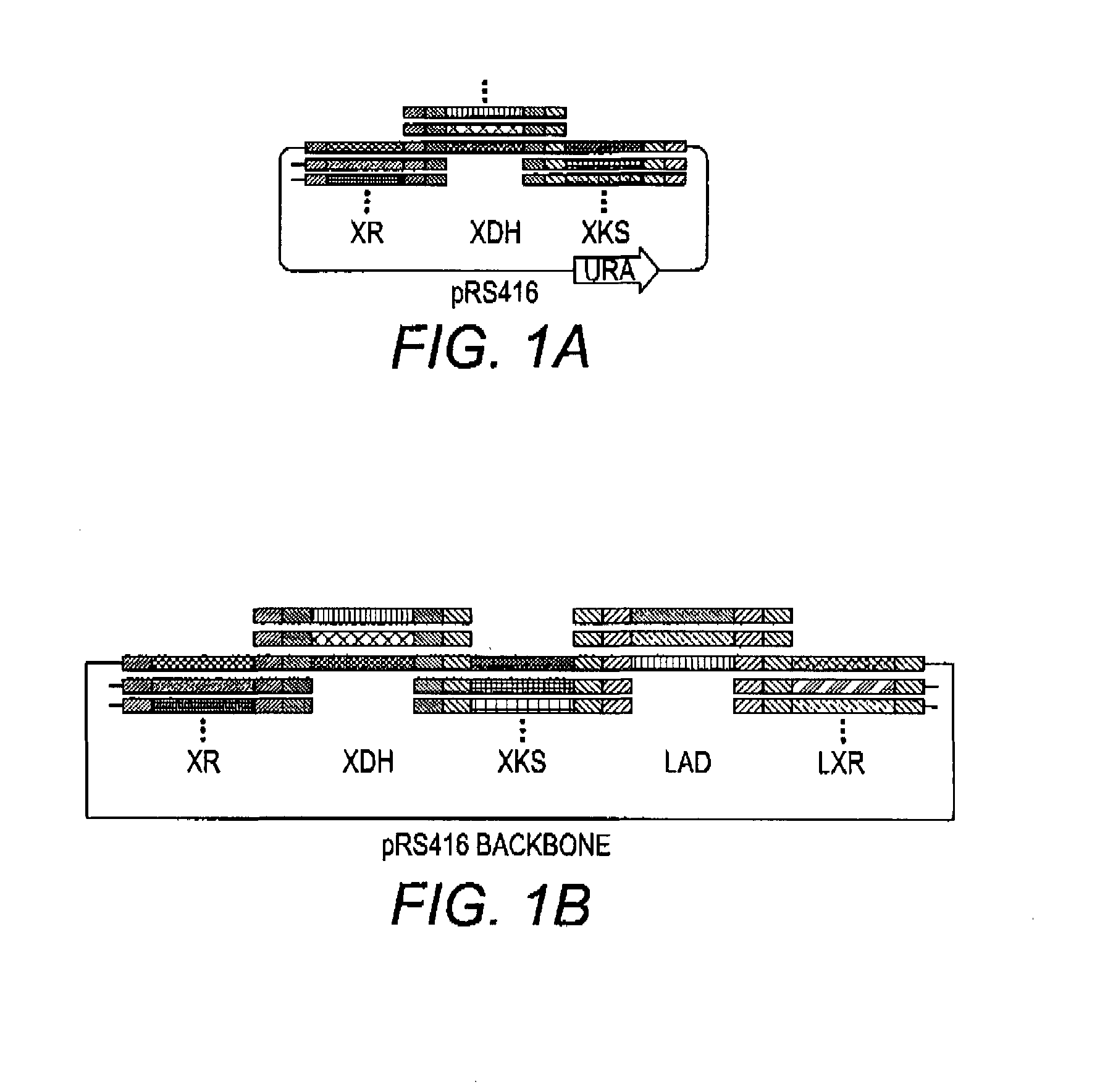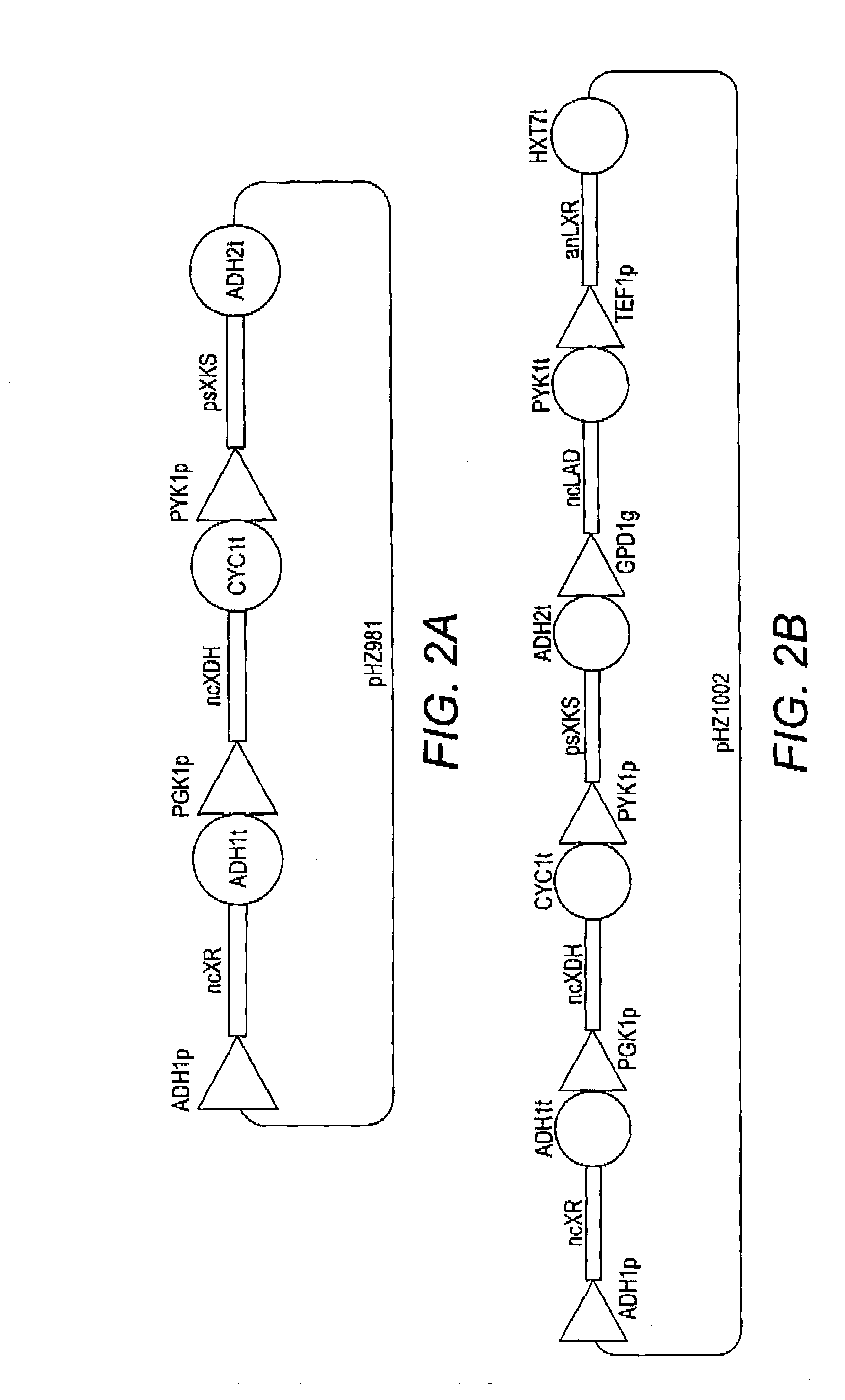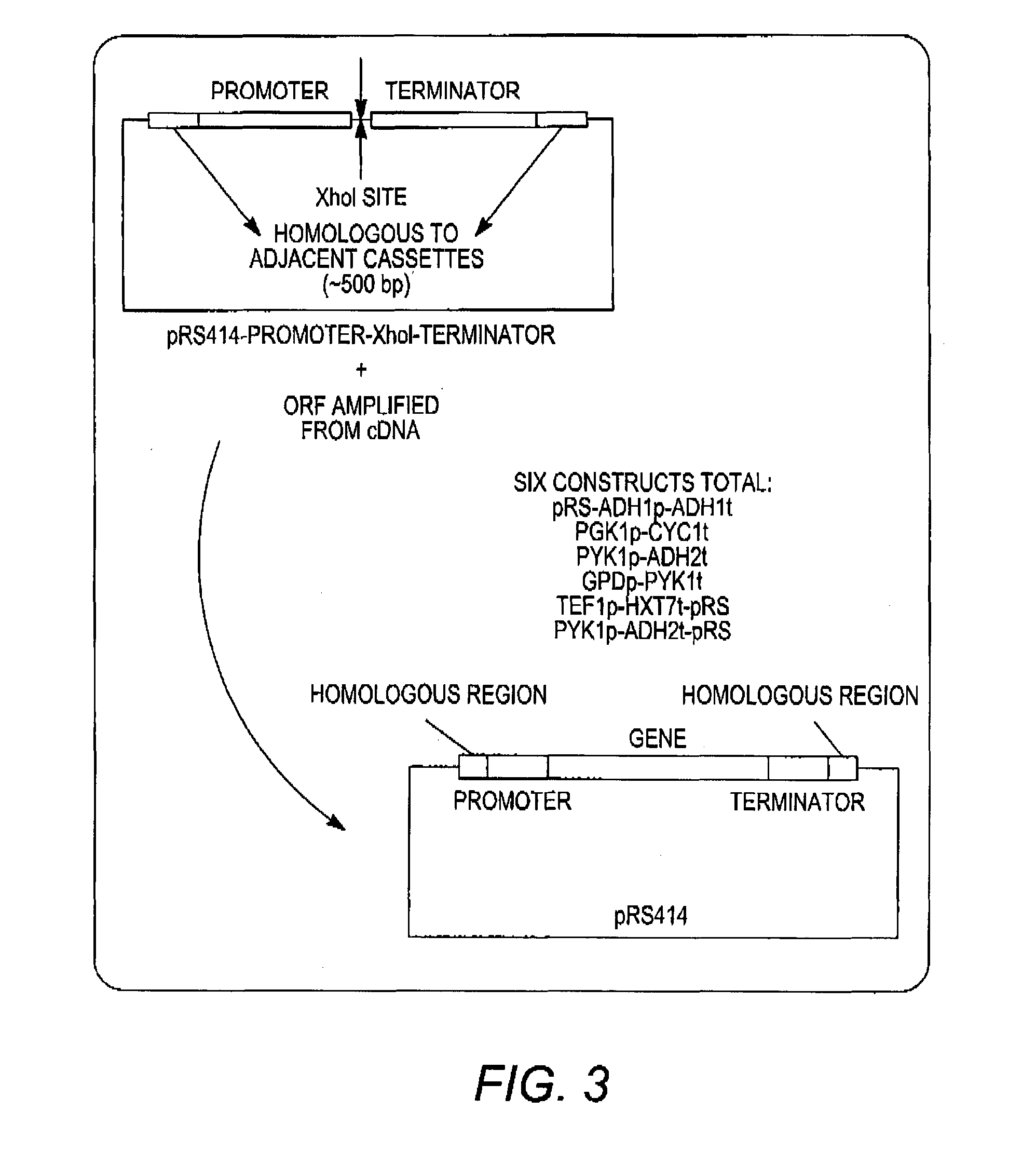Combinatorial design of highly efficient heterologous pathways
a heterologous pathway and heterologous technology, applied in the direction of transferases, peptides, enzymology, etc., can solve the problems of inefficient pentose utilization by recombinant i>s. cerevisiae /i>strains, inability to utilize pentose sugar, and inability to solve the problem of recombinant i>s. cerevisiae /i>
- Summary
- Abstract
- Description
- Claims
- Application Information
AI Technical Summary
Benefits of technology
Problems solved by technology
Method used
Image
Examples
embodiments
[0070]The present disclosure relates to methods of producing libraries of multi-enzyme pathways by providing a plurality of gene expression cassettes for each enzyme of a pathway of interest. In some aspects, each of the plurality of gene expression cassettes contains a nucleic acid containing a varying coding region of a homolog of an enzyme of interest in operable combination with a constant heterologous promoter. In these embodiments, the relative expression level of the enzyme of interest is a function of the sequence of the coding region, which differs from another of the plurality of gene expression cassettes. In other aspects, each of the plurality of gene expression cassettes contains a nucleic acid containing a constant coding region of an enzyme of interest in operable combination with a varying heterologous promoter. In these embodiments, the relative expression level of the enzyme of interest is a function of the sequence of the promoter, which differs from another of th...
example 1
Genome Mining of Enzyme Homologues for Pentose Utilization
[0143]To identify enzyme homologues for pathway assembly, an intensive literature search was first performed to identify known xylose reductases, xylitol dehydrogenases, xylulokinases, L-arabitol 4-dehydrogenases, and L-xylulose reductases. Genome mining was also performed at various databases (NCBI, NCBI BLAST, and BRENDA Enzyme databases) to identify genes encoding those enzymes based on annotation and sequence homology. In addition, several codon-optimized genes and mutants with altered cofactor specificity were also cloned and included in the library. Nucleic acids encoding these enzymes were obtained by introduction of mutations into the wildtype gene through site specific mutagenesis, or by synthesis of codon optimized genes by DNA2.0 (Menlo Park, Calif.).
[0144]To obtain the open reading frames (ORFs) encoding other enzyme homologues, strains carrying corresponding genes were obtained from various culture collections: A...
example 2
Cloning of Homologous Genes Involved in Pentose Utilization
[0148]Strains, Media, and Cultivation Conditions.
[0149]S. cerevisiae L2612 (MATα leu2-3 leu2-112 ura3-52 trp1-298 can1 cyn1 gal+) was kindly provided by Y. S. Jin (Jin et al., Applied and Environmental Microbiology, 69:495-503, 2003; and Ni et al., Applied and Environmental Microbiology, 73:2061-2066, 2007). Escherichia coli DH5α (Cell Media Facility, University of Illinois at Urbana-Champaign, Urbana, Ill.) was used for recombinant DNA manipulation. Yeast strains were cultivated in either synthetic dropout media (0.17% Difco yeast nitrogen base without amino acids and ammonium sulfate, 0.5% ammonium sulfate, 0.083% amino acid drop out mix) or YPA media supplemented with sugar as carbon source (1% yeast extract, 2% peptone, 0.01% adenine hemisulfate). E. coli strains were cultured in Luria broth (LB) (Fisher Scientific, Pittsburgh, Pa.). S. cerevisiae strains were cultured at 30° C. and 250 rpm for aerobic growth, and 30° C....
PUM
| Property | Measurement | Unit |
|---|---|---|
| Fraction | aaaaa | aaaaa |
| Temperature | aaaaa | aaaaa |
| Time | aaaaa | aaaaa |
Abstract
Description
Claims
Application Information
 Login to View More
Login to View More - R&D
- Intellectual Property
- Life Sciences
- Materials
- Tech Scout
- Unparalleled Data Quality
- Higher Quality Content
- 60% Fewer Hallucinations
Browse by: Latest US Patents, China's latest patents, Technical Efficacy Thesaurus, Application Domain, Technology Topic, Popular Technical Reports.
© 2025 PatSnap. All rights reserved.Legal|Privacy policy|Modern Slavery Act Transparency Statement|Sitemap|About US| Contact US: help@patsnap.com



